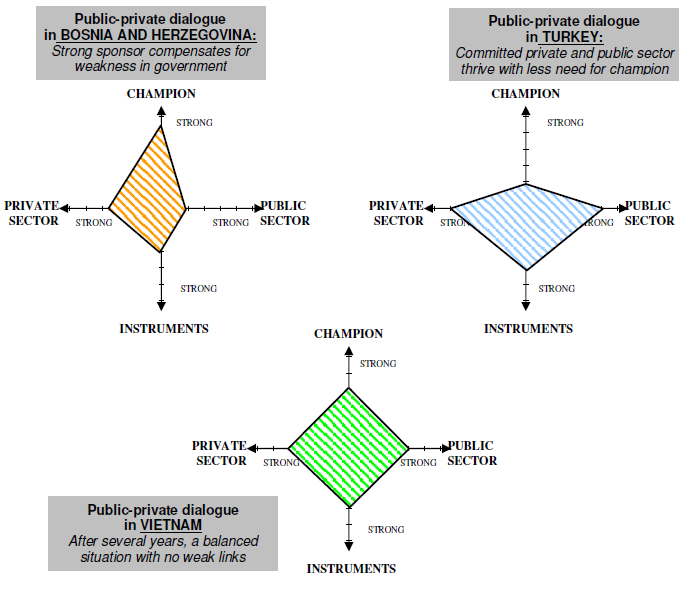This section provides a standardized mapping tool to assist task managers in diagnosing the current state of dialogue, the most important issues for dialogue, and the potential readiness for dialogue of relevant stakeholders. This tool involves desk research, field interviews, and focus groups.
Practitioners may not always have the luxury of adequate time and resources to run this mapping tool in its entirety. But it should be attempted if possible. Investing in diagnostics before launching a PPD initiative is worthwhile for several reasons:
- It enables better design decisions.
- It provides solid reasoning behind a decision to launch a dialogue process in one area rather than another, and justifies the amount of human and capital investment needed to support it.
- It gives donors and stakeholders solid ground on which to base their support of such an
initiative. - It creates a baseline against which the PPD can be measured over time.
- It is a good first step to get stakeholders acquainted with the idea of PPD, prior to fully
engaging them in an initiative. - It can flag potential obstacles that task-managers will need to overcome, thus enabling for
better strategic management decisions.
The questions that the diagnostic tool addresses are generally not ones that can be answered with a “yes” or “no” – they require subjective analysis and judgments. Yet the aim of this tool is to provide the guidelines and key questions necessary to enable task managers to write reports in a format that allows for comparison between different localities.
It should be possible for a small team to conduct this exercise within 14 days, as detailed in section B.2. below.
B.1.1. The PPD diamond
The PPD diamond is a simple conceptual framework for aiding clarity of thought at the outset of the diagnostic process. It maps the strength of four essential elements of PPD on two vertical and two horizontal axes. The dimensions are:
- Public sector: how strong is the capacity, political will to engage, and leadership?
- Private sector: how organized is the private sector, to what extent does it have leadership, do entrepreneurs feel a basic sense of security in speaking out to government without fear of retribution?
- Champion: to what extent are there credible and respected individuals with the expertise, profile and ability to attract the attention of participants and media?
- Instruments: what is the quality and capacity of support personnel, logistical facilities, and seed funds?
Dialogue can succeed when the diamond is imbalanced – although it is difficult to survive a weakness in more than two dimensions. Bearing in mind some examples of the PPD diamond in successful dialogue mechanisms helps to provide a framework for thought during the mapping exercise.

